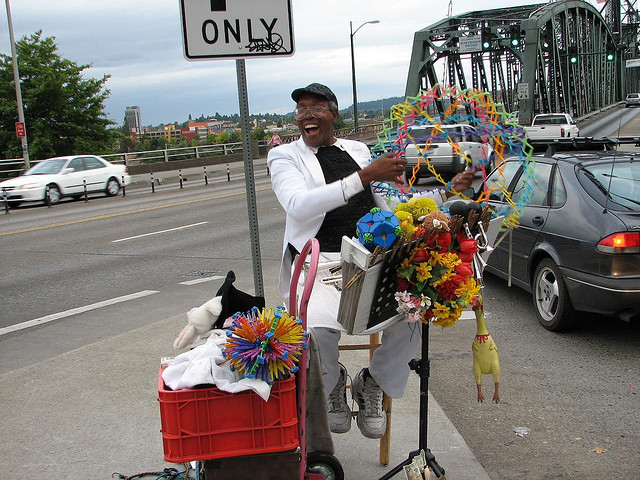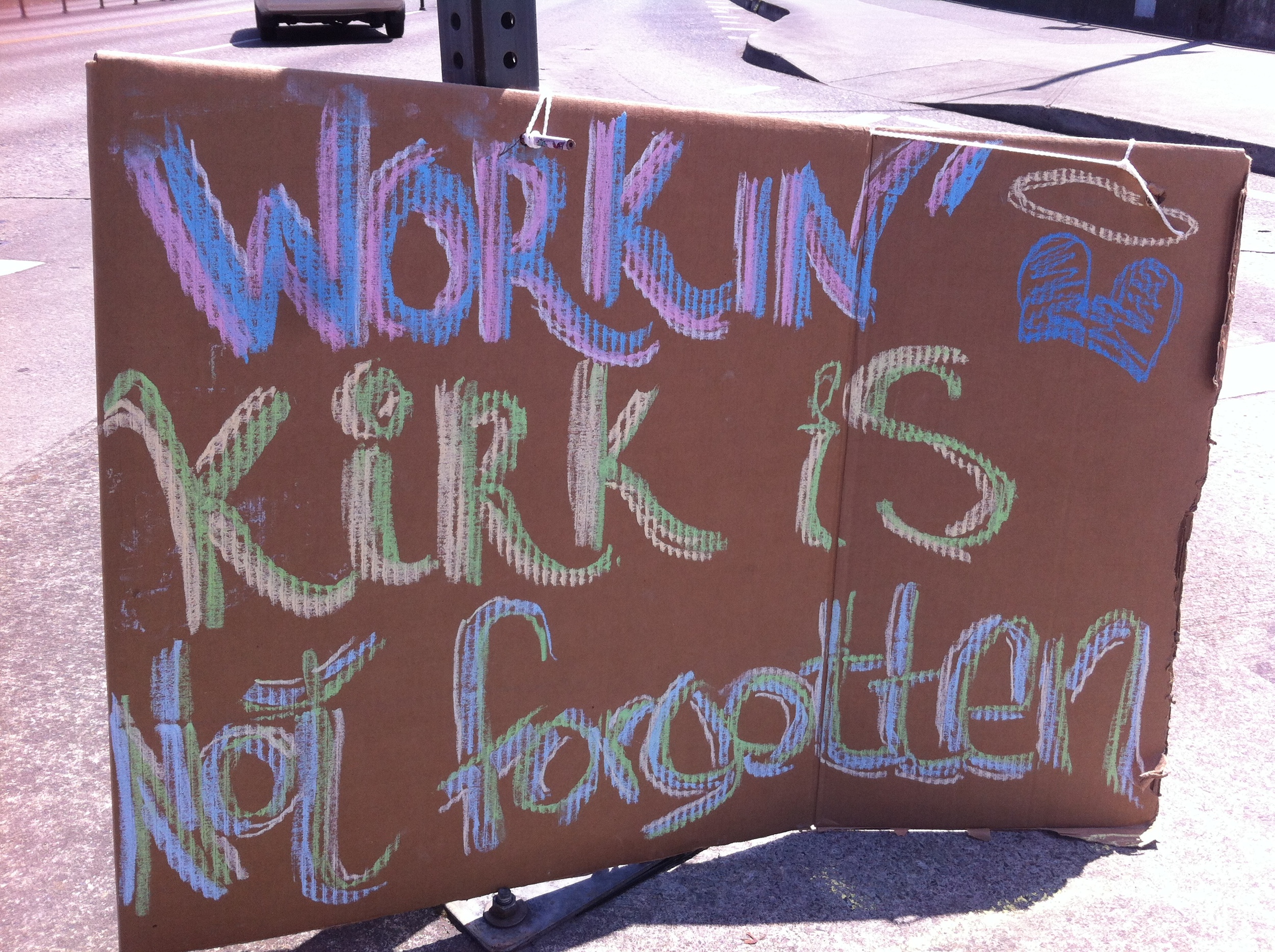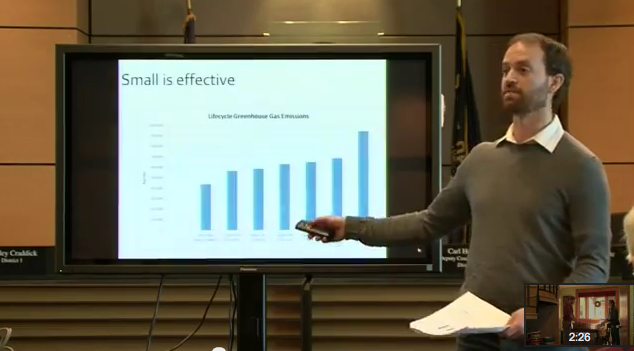Every time I bike home from downtown I pass two memorials. Every day I think about two people whom I never met. I know I’m not alone in remembering them, but today it was nice to see that someone else remembers, too. ***
Just a few weeks after I arrived in Portland, Kathryn Rickson, a young mother, was struck and killed on her bicycle when a semi-truck driver made a right-hand turn across the bicycle lane. There was a vigil in Kathryn's honor a few days later and a ghost bike appeared nearby. Her bicycle was soon surrounded by tokens of remembrance: flowers, photos, and sympathy cards for her family. The ghost bike has moved around the intersection over the past couple years, but it always lingers nearby, a daily reminder to be mindful.
Kathryn's tragic death sparked discussion about improving bicycle infrastructure and safety. Soon the location was repainted with a warning on the pavement reminding cyclists to go slow and watch for cars. I heed these reminders every day and I’m extra vigilant when biking downtown. There have been many times I’ve had to screech to a halt because a driver was too busy talking on a cell phone to notice they’d just entered the bike lane, cut me off, or turned across my travel lane. I despise the constant vigilance required of me as a cyclist, but I would rather be safe than sorry. I am grateful everyday that the memory of this woman I never met helps me stay safe.
***
Every evening, from his spot at the approach to the Hawthorne Bridge, "Working Kirk" Reeves greeted homebound commuters with bluesy saxophone tunes and brightly colored gizmos. His very presence slowed traffic, increasing safety for the thousands of cyclists who use the bridge daily. But Working Kirk did much more than slow traffic. He also slowed us. This former computer analyst - who dabbled in comedy and wore a white suit and Mickey Mouse ears while playing his trumpet - brought us all a moment of joy on a daily basis. Working Kirk sparked smiles, giving everyone a little reminder to catch our breath, take it slow and easy on the way home, and have a nice evening. I never spoke to the man, never dropped a dollar in his saxophone case. I didn’t even know his name until today. But I grinned at him every day as I passed by on my bike and I hummed his melodies on the way home. His constancy was reassuring.
Then, one day, he wasn’t there. I noticed. It was strange. The next day someone else was standing on the corner, playing the blues. That was even stranger. The next day Working Kirk’s corner was a memorial, filled with those tokens of remembrance. I cried the rest of the way home that evening. Shortly after I heard a rumor, which was later confirmed, that Working Kirk ate his own gun. It made me wonder, as suicides usually do. Would Working Kirk still be there on the corner, playing the blues, if he’d known how much he meant to all of us? Would it have helped if more people dropped a dollar in his saxophone case? Or would it have been the same either way? Did Working Kirk play the blues because he felt them?
What I do know is that Kirk’s absence is audible. I still make a point to smile when I cross the Hawthorne Bridge, and wave to the cars that stop for me, but it’s bittersweet now. This corner just isn't the same without Working Kirk.
Today, when I rode home I discovered a little chalk memorial and a cardboard sign. I parked my bike and walked back to the spot to pay my respects. A man was sitting there on the corner, playing a harmonica, his bike slung over the edge of the guardrail. When I gave him a sad smile he said, “He made a lot of people smile.” “Yeah,” I whispered. “I miss him.”
***
Although I never met these two people I’m grateful that these spots along my daily route make me think of them. These memorials are a reminder that I’m leaving a legacy, just as they have done. They remind me to take it slow, be safe, and keep smiling.












